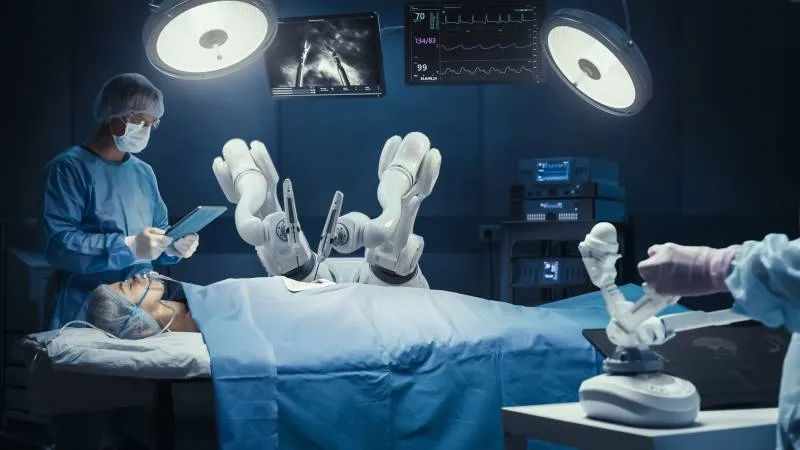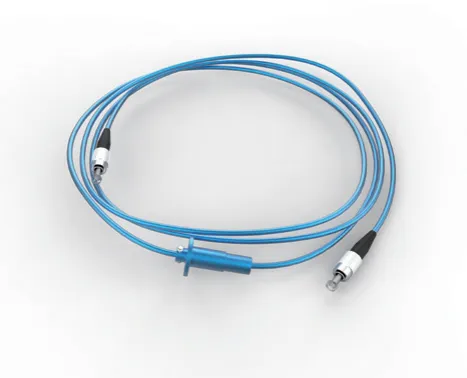Slip Rings in Medical Robotics: Precision and Safety Requirements
BY NBG
 2025-11-11
2025-11-11
VIEWS: 263
Slip Rings in Medical Robotics: Precision and Safety Requirements
In the world of medical robotics, the recent pace of development has revolutionized healthcare by performing surgical and therapeutic procedures and producing a much better patient outcome due to minimally invasive procedures that require a precise level of handling. The medical robotic slip ring is a key element in the core of these advanced systems and the key means of ensuring smooth operation. Slip rings, or rotary joints, enable a continuous supply of power and signal transmission in medical robots, enabling intricate robotic motions with neither sacrifice of safety nor accuracy.
The Role of Slip Rings in Medical Robotics

Medical robotic systems require ongoing rotation and safe electrical contacts for power, data, and control. These require slip rings to permit unlimited rotation without signal loss or cable entanglement.
Modern medical robots have multiple degrees of freedom for complex movements that can surpass human dexterity. The surgical robot slip ring ensures these movements while maintaining clear, critical signals. Whether transmitting high-resolution imaging data or precise control commands, slip rings preserve essential electrical pathways for optimal robot function.
Medical conditions present special challenges. Medical robot slip rings have to function reliably in clean conditions, withstand frequent cleaning and sterilization, and be capable of satisfying performance criteria essential to patient safety. Special designs beyond general industrial slip ring designs are needed in this environment.
Key Performance Requirements
The expectations postulated on medical robotic slip rings are quite demanding since the environment of healthcare is extremely critical. The healthcare safe slip ring key performance requirements are as follows:
1. High Precision and Reliability: A robotics slip ring should be able to maintain a high level of performance over time in order to perform sensitive operations. Electricity disturbances or interruptions in any signal may result in error and risk of harming a patient.
2. Design: Small Due to the limited working space in which medical robots can often move, the slip rings must be suitably small, yet functionality must not be compromised.
3. Low Electrical Noise: In medical robots, signal transmission is a very critical feature that needs minimal electrical noise slip rings, as this can corrupt data and prevent be able from communicating effectively between each component of the robot.
4. Long Life: Medical applications require high durability with slip rings that can survive thousands of rotations, even as they endure repeated sterilizations and on/off depressurization.
5. Biocompatibility and Safety: In the field of healthcare, it is important that safe slip rings are designed in such a way that they can be used within the confines of sterile conditions without the risk of polluting the environment in any manner. This means that the slip rings designed must meet strict medical standards (such as ISO 13485).
6. High-Speed Data Transfer: As AI-driven diagnostics and real-time imaging become a reality, slip rings will be needed to accommodate the high-bandwidth data transfer involving applications such as intraoperative imaging.
This puts the design and production of medical robotic slip rings to be a complicated engineering task that has to be produced using advanced materials and manufacturing methods.
Typical Slip Ring Solutions for Medical Robots
There are different kinds of slip rings optimized to satisfy the requirements of medical robotics:
1. Capsule Slip Rings: Capsule slip rings are smaller slip rings that are best utilized by endoscopes or other handheld robotic equipment. They provide a robust signal transmission in medical robots with a compact size.

2. Pancake Slip Rings: These unique slip rings are used when vertical area is kept at an absolute minimum, their form is accomplished as flat, disk-like design, capable of becoming a component of some robotic arms.

3. Through-Hole Slip Rings: These are utilised in frameworks where there needs to be a middle channel to wire or fluids through it like in complex surgical robots. They cater to the high power and data transfer requirements.

4. Fiber Optic Rotary Joints (FORJs): Applications involving ultra-high-speed transmission of data would be able to complement traditional surgical robot slip rings by providing optical signal transmission between the rotary joint and the electronics.

1. Custom Slip Rings: A significant percentage of medical robotics requires special applications. Precision slip rings for robotics need to be designed specifically for each power, signal, and size requirement by the manufacturer to guarantee optimum performance when it is required in robotics.
NBG possesses extensive experience in the R&D and manufacturing of slip rings for surgical robots. Collaborating with internationally renowned medical enterprises, we provide professional customized solutions and have achieved large-scale delivery of slip rings.
The solutions are designed to address the specialized needs of medical robotics with a cost-benefit in size, performance, and safety considerations.
Application Examples: Where Precision Meets Practice
Medical slip ring is used in a variety of medical robotics systems:
1. Surgical Robots: Surgical robots such as the da Vinci Surgical System use surgical robot slip rings to facilitate accurate movements of robot arms in minimally invasive surgery. Such slip rings guarantee a continuous flow of power and data, enabling surgeons to manipulate instruments with precision.
2. Diagnostic Imaging Systems: Slip rings in CT scanners and MRI equipment help the imaging assembly to turn and capture quality images that are transmitted in real-time diagnostic applications.
3. Rehabilitation Robots: Exoskeletons and robot prosthetics have slip rings to drive the motors and the sensors to provide patients with a smooth and natural movement.
4. Endoscopic Systems: Precision slip rings developed as compact robotics enable endoscopes to move and turn around inside the body, furnishing clear pictures during diagnosis and surgical purposes.
5. Automated Drug Delivery Systems: Slip rings allow the robot to accurately control the system that delivers medication or performs a microsurgery, increasing the safety of patients.
These applications bring the versatility and sheer implication of rotary joints in the field of robot surgery in the development of medical technology.
Benefits of Using Precision Slip Rings in Medical Robotics
The integration of precision slip rings for robotics offers numerous benefits:
1. Enhanced Precision: By ensuring reliable signal transmission in medical robots, slip rings enable precise control, reducing the risk of errors during surgery or diagnostics.
2. Improved Patient Safety: Safe slip rings for healthcare are designed to meet stringent medical standards, minimizing risks associated with electrical faults or contamination.
3. Increased System Longevity: High-durability slip rings reduce maintenance needs, ensuring medical robots remain operational for extended periods.
4. Versatility: Customizable slip rings can be tailored to various medical applications, from compact endoscopes to large-scale surgical systems.
5. Seamless Integration: Advanced slip rings support hybrid configurations, combining power, data, and fluid transmission, making them ideal for complex robotic systems.
These benefits make medical robotic slip rings a cornerstone of modern medical robotics, driving innovation and improving patient outcomes.
Final Thoughts
The role of slip rings in medical devices cannot be overstated. As medical robotics continues to evolve, the demand for precision slip rings for robotics will only grow. These components are vital for enabling the complex movements, reliable signal transmission in medical robots, and stringent safety requirements that define modern healthcare technology. From surgical robot slip rings to robotic surgery rotary joints, these devices ensure that medical robots operate with the precision and reliability needed to save lives.
Manufacturers must continue to innovate, developing safe slip rings for healthcare that meet the ever-increasing demands of medical robotics. By prioritizing precision, durability, and compliance with medical standards, slip rings will remain a critical enabler of advancements in robotic surgery, diagnostics, and patient care. As the healthcare industry embraces automation and AI, the humble medical robotic slip ring will continue to play a pivotal role in shaping the future of medicine.









